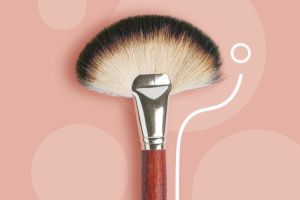With the continuous improvement of material living standards, people begin to pursue spiritual life. Everyone likes to pursue uniqueness. People are not satisfied with industrialization. More and more people like to make a desired pottery product by themselves.
Pottery is also a very popular game activity in children's education. As a natural resource, clay can let children use their imagination freely, and is widely used as an early education resource all over the world.
From the historical development, we can see that pottery art is a comprehensive art, which has experienced a complex and long process of cultural accumulation. It has an inseparable relationship of inheritance and comparison with painting, sculpture, design, and other arts and crafts. The time-honored hand-made clay pottery technique is known as "the art of mud and fire".
The development of pottery art along with the production of ceramics. First of all, it meets the needs of human beings for their own practical functions. At the same time, on the basis of practicality, the original simplicity and beauty are supported through decoration, and then it develops into a work of art with both practicality and appreciation. Now, starting from the emotional needs of pure spirit, we have created a path of pure art.
Pieces of clay pottery are the sweat of artisans, who interpret piety and awe in a handful of mud and a fire. The respect for traditional skills shows the simple and dignified beauty of clay pottery, while the adherence to traditional culture gives it a deeper cultural connotation, and the clay pottery also glows with a more brilliant light of civilization.
The clay pottery comes from the soil, and after being tempered by fire, it glows with new brilliance. Time is a good proof. After the test of water and fire, the transformation from a handful of clay to a piece of clay pottery has spanned many years of humanistic heritage. Tao has a new lease of life. Although the appearance of pottery is simple and simple, it reflects its specific cultural connotation and historical traces.
There are four procedures in the production of pottery products: First, soil selection. Select laterite and sedimentary soil with strong plasticity and operability. After washing, precipitation, and filtration, it becomes purer and finer native soil. The second is ring making, and small utensils are directly kneaded. The third is color decoration, and the paint is made of colored natural minerals. The fourth is kiln firing. After repeated calcination at high temperature, the pottery is of excellent quality, hard and durable.
With the development of society and the improvement of people's living standards, although the market for products made of clay is getting smaller and smaller, the clay pottery culture has not disappeared. Young people are still working hard to protect the local clay pottery culture, and they have studied The way of dissemination of multi-earth pottery culture makes it rejuvenated.
The recent rise of pottery life museums are dedicated to the development of pottery products. The pottery products made are artistic, practical and ornamental, and each pottery ornament pays attention to originality and uniqueness. In the process of personal production, consumers exercise innovation and hands-on ability, and at the same time spread the ceramic art culture.
Today, when folk handicrafts are almost completely replaced by industrialized products, all traces of the old times are gradually drifting away before our eyes. Now we want to regain the traditional skills scattered in the folk to show the unique humanistic atmosphere, and hope that more people can understand and experience this traditional handicraft.


